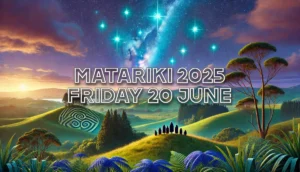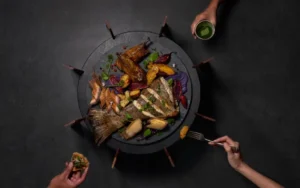Importance of Kaitiakitanga (Guardianship) in Matariki Celebrations
Matariki, the Māori New Year, is a time of renewal, reflection, and celebration. As part of the celebrations, the concept of kaitiakitanga, or guardianship, plays an important role. Kaitiakitanga involves taking responsibility for the environment and the natural resources within it, as well as ensuring their preservation for future generations. We will explore the importance of kaitiakitanga in Matariki celebrations and its significance in Māori culture.
Kaitiakitanga in Māori Culture
Kaitiakitanga has been a fundamental concept in Māori culture for centuries. The concept involves a deep connection and respect for the land and its resources, as well as the acknowledgement that all living beings are interconnected. The role of the kaitiaki, or guardian, is to ensure the sustainability of the environment and its resources, and to pass on this responsibility to future generations.
In Māori culture, the natural world is seen as a living entity with its own mauri, or life force. This life force must be respected and protected to ensure the health and wellbeing of the land and its inhabitants. This is why kaitiakitanga is so important in Matariki celebrations, as it emphasizes the importance of preserving the environment and its resources for future generations.
Kaitiakitanga in Matariki Celebrations
During Matariki celebrations, the concept of kaitiakitanga is brought to the forefront. This is because Matariki is a time of reflection and renewal, and a time to acknowledge the relationship between the land and its people. Many Matariki celebrations involve activities that highlight the importance of kaitiakitanga, such as:
- Reforestation and Restoration Projects: Matariki is a time to reflect on the impact that humans have had on the environment and to take action to restore and preserve it. Many Matariki celebrations involve reforestation and restoration projects, where participants plant native trees and plants and undertake other activities to restore the natural environment.
- Waste Reduction and Recycling: Another way in which kaitiakitanga is emphasized during Matariki celebrations is through waste reduction and recycling. Participants are encouraged to reduce their waste and recycle as much as possible, in order to minimize the impact on the environment.
- Traditional Fishing and Hunting Practices: In traditional Māori culture, fishing and hunting were important sources of food. However, these practices were undertaken in a sustainable way, with the understanding that the environment and its resources needed to be preserved for future generations. Many Matariki celebrations involve the use of traditional fishing and hunting practices, as a way of acknowledging this connection to the environment.
- Cultural Workshops and Educational Programs: Matariki celebrations often include cultural workshops and educational programs that highlight the importance of kaitiakitanga in Māori culture. These workshops may include learning about traditional Māori gardening practices, or about the importance of preserving the mauri of the land.
Kaitiakitanga (Guardianship) in Matariki Celebrations
Kaitiakitanga is a fundamental concept in Māori culture, and it plays an important role in Matariki celebrations. The concept emphasizes the importance of taking responsibility for the environment and its resources, and ensuring their preservation for future generations. During Matariki celebrations, kaitiakitanga is highlighted through activities such as reforestation and restoration projects, waste reduction and recycling, traditional fishing and hunting practices, and cultural workshops and educational programs. By emphasizing the importance of kaitiakitanga in Matariki celebrations, we can ensure the preservation of the environment and its resources for future generations.


